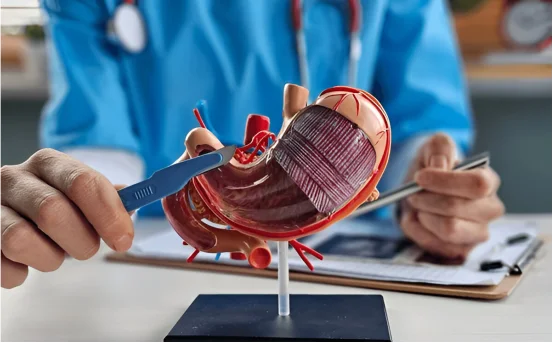Tubal ligation reversal surgery, often referred to as “getting your tubes tied,” is a common form of permanent female contraception. However, life circumstances can change, and many women later wish to conceive again. Fortunately, tubal ligation reversal surgery can restore fertility in some cases.
This is where tubal ligation reversal surgery comes in a medical option that offers hope to women wishing to conceive naturally after undergoing sterilization. Thanks to modern surgical advancements, reversing a tubal ligation is now more precise and successful than ever before, especially when performed by experienced fertility specialists. Depending on the method used during the initial ligation and the current reproductive health of the patient, various types of tubal ligation reversal surgery are available.
What Is Tubal Ligation Reversal?
Tubal ligation reversal (also called tubal reanastomosis) is a surgical procedure designed to reconnect the fallopian tubes after they have been cut, tied, clipped, or blocked during a tubal ligation. The goal is to restore the natural pathway for the egg to travel from the ovary to the uterus, enabling natural conception.
While not all women are candidates for this procedure, many have successfully become pregnant after undergoing the right type of reversal surgery.
Why Choose Tubal Reversal?
Women may opt for tubal reversal for various personal, medical, or emotional reasons, including :-
-
Remarriage and a desire for more children
-
Regret after tubal ligation
-
Loss of a child
-
A change in financial or family circumstances
-
Religious or cultural beliefs favoring natural conception
Before deciding on surgery, patients typically undergo evaluations including imaging (HSG), blood tests, and a review of their original tubal ligation technique.
Factors That Affect Reversal Success
Success of tubal ligation reversal depends on several factors :-
-
Type of original tubal ligation (some methods are easier to reverse than others)
-
Remaining length of fallopian tubes
-
Woman’s age
-
Overall reproductive health
-
Surgeon’s expertise and surgical method used
Types of Tubal Ligation Reversal Surgery
There are several techniques for tubal ligation reversal, each tailored to the specific type of ligation and condition of the fallopian tubes. Here are the most commonly used procedures:
Microsurgical Tubal Reanastomosis
Overview :-
This is the most common and preferred method for reversing tubal ligation. It involves reconnecting the healthy ends of the fallopian tubes under a high-powered surgical microscope.
Procedure :-
-
Performed under general anesthesia.
-
A small incision is made in the lower abdomen (mini-laparotomy).
-
The blocked segments are removed, and the open ends of the fallopian tubes are carefully stitched back together using microsurgical techniques.
Ideal Candidates :-
-
Women with clips, rings, or ligature methods that left healthy tube segments.
-
Tubes longer than 4 cm post-ligation.
Benefits :-
-
High success rate (up to 70% pregnancy rate in women under 35).
-
Minimal damage to surrounding tissue.
-
Short hospital stay and quick recovery.
Laparoscopic Tubal Reversal
Overview :-
This minimally invasive procedure uses a laparoscope (a thin camera) to perform the tubal reversal with small incisions.
Procedure :-
-
Small keyhole incisions are made in the abdomen.
-
The surgeon uses fine instruments and camera guidance to reconnect the fallopian tubes.
Ideal Candidates :-
-
Women who had ligation with clips or rings.
-
Those seeking a less invasive approach with shorter recovery time.
Benefits :-
-
Less scarring and blood loss.
-
Faster healing time.
-
Reduced hospital stay.
Limitations :-
-
Technically complex; may not be suitable for all ligation types.
-
Requires highly skilled laparoscopic surgeons.
Robot-Assisted Tubal Reversal Surgery
Overview :-
This modern technique uses robotic technology to assist the surgeon with high-precision movements during the reversal process.
Procedure :-
-
Similar to laparoscopic surgery but enhanced with robotic arms.
-
The surgeon controls the robot to delicately reconnect the fallopian tubes.
Ideal Candidates :-
-
Women looking for cutting-edge technology.
-
Complex cases where extreme precision is beneficial.
Benefits :-
-
High accuracy and reduced human error.
-
Minimal scarring and pain.
-
Lower risk of complications.
Drawbacks :-
-
Costlier than other methods.
-
Limited availability at all hospitals.
Mini-Laparotomy Tubal Reversal
Overview :-
A traditional but still effective method, mini-laparotomy involves a small abdominal incision to access and reconnect the fallopian tubes.
Procedure :-
-
An incision (smaller than in open surgery but larger than laparoscopy) is made above the pubic bone.
-
Tubes are reconnected using fine sutures under magnification.
Ideal Candidates :-
-
Women not suitable for laparoscopy or robotic surgery.
-
Patients in rural or low-resource settings.
Benefits :-
-
Accessible and cost-effective.
-
Good success rates with the right candidates.
Limitations :-
-
Slightly longer recovery time.
-
More scarring compared to laparoscopic options.
Fimbrial Reconstruction
Overview :-
If the end (fimbrial portion) of the fallopian tube has been removed or damaged, fimbrial reconstruction may help restore function.
Procedure :-
-
Rebuilds or reshapes the fimbrial end of the tube to allow egg pick-up during ovulation.
Ideal Candidates :-
-
Women who underwent fimbriectomy (removal of fimbrial end).
-
Those with localized fimbrial damage due to surgery or infection.
Benefits :-
-
Offers pregnancy potential in select cases.
-
Alternative to IVF in certain situations.
Limitations :-
-
Lower success rate compared to other reversal types.
-
May require more intensive post-operative monitoring.
How to Choose the Right Reversal Method?
Choosing the best reversal surgery depends on :-
-
The type of tubal ligation you originally had (clips, rings, cauterization, fimbriectomy).
-
Your age and reproductive goals.
-
Your fertility history and your partner’s sperm health.
-
Surgeon’s experience and access to advanced techniques.
Consultation with a fertility specialist is crucial to assess your eligibility and suggest the most suitable procedure.
Recovery and Aftercare
Recovery depends on the type of surgery performed. Here’s a general overview :-
-
Hospital Stay :- 1–2 days (outpatient for laparoscopic).
-
Downtime :- 1–2 weeks for normal activities.
-
Pain :- Mild to moderate, managed with medications.
-
Follow-Up :- Ultrasound and fertility assessments as advised.
Patients should avoid heavy lifting, sexual activity, and strenuous work for 2–4 weeks. Your doctor will guide you on when it’s safe to try for pregnancy.
Conclusion
Tubal ligation reversal offers hope to women who regret sterilization or want to expand their families. With advancements in microsurgery, laparoscopy, and robotic-assisted methods, the chances of restoring fertility are higher than ever especially with the right surgeon and approach.























